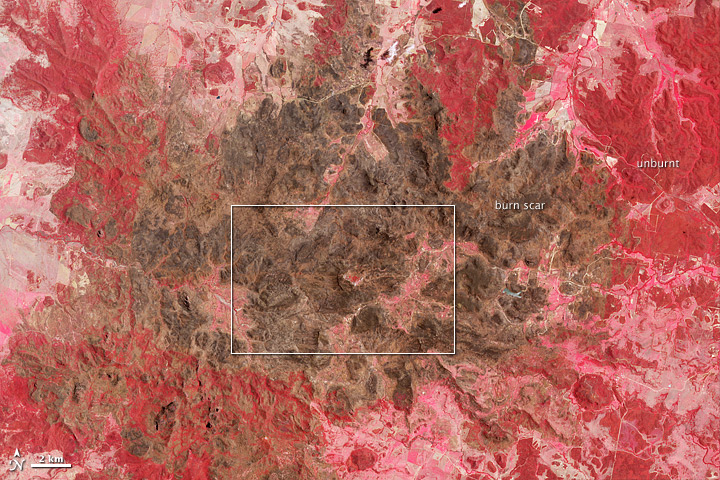


On the afternoon of January 14, 2013, a fierce bushfire swept across the campus of Siding Spring Observatory, a world-class astronomy facility on a ridge in Australia’s Warrumbungle National Park. The observatory is home to some of the most powerful sky-mapping telescopes in the world.
Ten years earlier, a brush fire devastated one of Australia’s other top observatories, so the staff of Siding Spring feared that history was repeating itself. As the fire reached the observatory’s campus, cameras and telescopes sent back disturbing images of flames lapping at the doorsteps of buildings and smoke billowing overhead.
By nightfall on January 14, the situation looked dire to the scientists and staff who had evacuated and were left to monitor the situation online. A handful of buildings on the campus were on fire. At one point, a thermometer on campus recorded a spike in air temperatures to 100 degrees Celsius (212 degrees Fahrenheit).
The next day, however, brought relief. The fire subsided, and only three buildings at Siding Spring—including the residence of a Siding Spring astronomer—were destroyed. Aside from minor smoke damage, the major telescopes were fine.
The Advanced Spaceborne Thermal Emission and Reflection Radiometer (ASTER) on NASA’s Terra satellite offers a unique perspective on how close the observatory came to destruction. The satellite acquired these false-color views of the burn scar on February 4, 2013, three weeks after the fire. The images combine measurements from both the visible and the infrared portions of the electromagnetic spectrum; unburned forest vegetation appears dark red, unburned grasslands are pink, and burned vegetation is brown. The observatory’s buildings and telescope domes are white. The fire burned a large swath of Warrumbungle National Park severely—except for a small patch of unburned forest around and just north of the observatory.
Years of preparation, combined with the heroic efforts of 30 firefighters, explain why only that small patch of forest survived. A decade earlier, after fire devastated Mount Stromlo Observatory, Siding Spring took steps to strengthen its defenses against bushfire. Mesh nets were installed over many of the observatory’s structures to repel flying embers. And controlled fires were occasionally set around the observatory grounds to rid the forests of underbrush.
Amanda Bauer, an Australian Astronomical Observatory fellow who wrote about the fire and its aftermath on a blog (Astropixie) summed up the sentiments of the staff: “[I was] overjoyed that the measures taken to save Siding Spring Observatory against the fire (when combined with a bit of luck) were enough in this case!”
NASA Earth Observatory image by Jesse Allen, using data from NASA/GSFC/METI/ERSDAC/JAROS, and U.S./Japan ASTER Science Team. Caption by Adam Voiland.